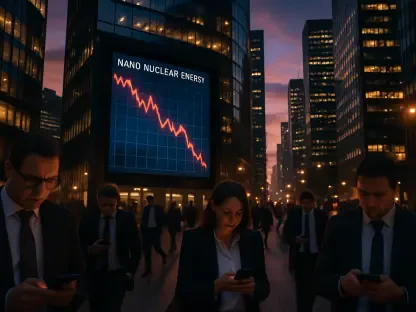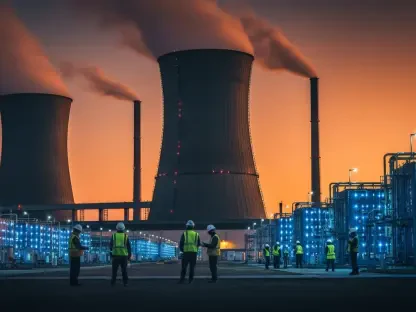In the quiet town of Frome, Somerset, UK, a storm of controversy has erupted over a proposed battery energy storage site (BESS) on land north of Styles Close, nestled uncomfortably close to a residential neighborhood. These systems, crucial for capturing electricity during low-demand periods and releasing it during peak times, are a linchpin in the global pivot to renewable energy. Yet, the plan by Trina Solar UK HoldCo Ltd. to construct a 30 MW facility has ignited fierce opposition from locals, who fear safety hazards, disruptive noise, and an eyesore in their backyard due to the site’s proximity to homes. Initially turned down by Somerset Council’s planning committee earlier this year, the decision was reversed by the Planning Inspectorate following an appeal, giving the green light to the project. This clash underscores a broader tension between the urgent need for sustainable infrastructure and the immediate concerns of communities bearing the brunt of such developments.
Key Issues in the Frome BESS Debate
Safety Risks and Mitigation Measures
The specter of safety risks looms large over the Frome community, with many residents fixated on the potential for catastrophic fires tied to large-scale battery systems. The site’s location, a mere 30 meters from the nearest home, has amplified these fears, as historical incidents of battery-related fires in other contexts fuel anxieties about a disaster unfolding in their midst. Local leaders, including MP Anna Sabine and Councillor Adam Boyden, have been vocal in echoing the terror felt by those living so close to the proposed facility. The dread of a fire breaking out, with potentially devastating consequences for nearby properties, has driven much of the opposition, turning what could be a progressive energy project into a deeply personal battle for safety and peace of mind among the townsfolk.
In response to these pressing concerns, Planning Inspector Graham Chamberlain offered a detailed assessment of the safety protocols embedded in the project’s design during his evaluation. His findings highlighted an array of protective measures, such as advanced fire detection systems, automatic shutdown capabilities, inert gas aerosol suppression setups, and ventilated cabinets to prevent dangerous pressure buildup. Compliance with stringent national and international safety standards was also emphasized, alongside provisions for emergency vehicle access and the presence of a nearby fire hydrant. Chamberlain concluded that these safeguards sufficiently minimized risks, asserting that the likelihood of a fire or significant harm to residents was not substantial enough to warrant halting the development, despite the community’s apprehensions.
Quality of Life Impacts
Another layer of concern for Styles Close residents centers on how the battery storage facility might disrupt their daily lives, particularly through noise and visual intrusion. The hum of transformers and other equipment threatens to shatter the tranquility of this residential area, while the looming presence of industrial structures risks turning a once-pleasant view into an unappealing blight. Such impacts weigh heavily on locals who value the calm and aesthetic of their neighborhood, fearing that the project could fundamentally alter the character of their surroundings. The prospect of living next to a facility that feels so out of place has spurred significant unease, as residents grapple with the potential loss of the peaceful environment they’ve long cherished.
To address these disruptions, Inspector Chamberlain provided insights from his site visit on October 27, proposing practical solutions to soften the facility’s impact. He noted that the natural slope of the land would help reduce visibility from nearby homes, while endorsing the installation of an acoustic fence to curb noise pollution from the equipment. Additionally, dense planting around the site was suggested as a way to visually blend the facility into the landscape over time, even from upper floors of adjacent properties. Chamberlain also pointed out that construction noise, while unavoidable, would be temporary, lasting roughly six months, with ongoing maintenance limited to minimal bi-weekly inspections. These measures aim to balance the project’s footprint with the community’s need for a livable environment, though skepticism remains among locals about their effectiveness.
Broader Context and Implications
Environmental and Energy Goals
On the environmental front, the Frome BESS project incorporates specific measures to mitigate its impact on the local ecosystem, reflecting a broader commitment to sustainability. Plans include the creation of new wetlands near Rodden Lake Stream to offset the effects of construction, alongside safeguards to prevent contamination from potential fire runoff into nearby water sources. The facility’s 30 MW capacity aligns with similar regional projects, highlighting its role in stabilizing the grid and facilitating the integration of renewable energy sources. This scale of storage is increasingly vital as societies strive to reduce reliance on fossil fuels, ensuring that clean energy can be harnessed effectively even when production is inconsistent, such as during periods of low wind or sunlight.
Beyond immediate environmental considerations, the necessity of battery energy storage systems in achieving long-term energy goals cannot be overstated, a point acknowledged even by critics of the Frome site. MP Anna Sabine, while critical of the chosen location due to its proximity to homes, has conceded the importance of such infrastructure in transitioning away from carbon-intensive power sources. These facilities act as a backbone for renewable energy, storing excess power for use during peak demand and reducing the need for backup fossil fuel plants. However, the debate over site selection persists, as communities question why residential areas must bear the burden of projects deemed essential on a national scale, pointing to a need for more thoughtful planning in future developments.
Community Opposition and Policy Trends
The depth of community resistance in Frome was evident from the outset, culminating in Somerset Council’s initial rejection of the project earlier this year. Backed by local representatives like Sabine and Boyden, residents mounted a robust campaign driven by fears over safety and the potential erosion of their quality of life. A lack of detailed technical information during early discussions with the council only deepened mistrust, leaving many feeling unheard and uncertain about the risks they might face. This groundswell of opposition reflects a visceral concern not just for personal safety, but for the broader implications of living conditions becoming intolerable, potentially forcing economic or emotional displacement in a tight-knit community.
Looking at the bigger picture, the Planning Inspectorate’s decision to overturn the council’s refusal signals a prevailing trend across the UK, where national energy priorities often take precedence over localized objections, provided technical risks are deemed manageable. Chamberlain’s ruling, grounded in pragmatic assessments of safety and mitigation strategies, may serve as a benchmark for future battery storage proposals encountering similar pushback. This approach suggests that while community sentiments are considered, they are frequently outweighed by the strategic imperative of bolstering renewable infrastructure. The Frome outcome underscores the delicate balance authorities must navigate, hinting at ongoing challenges as more such projects are proposed, and emphasizing the need for enhanced dialogue to bridge the gap between local concerns and national objectives.









